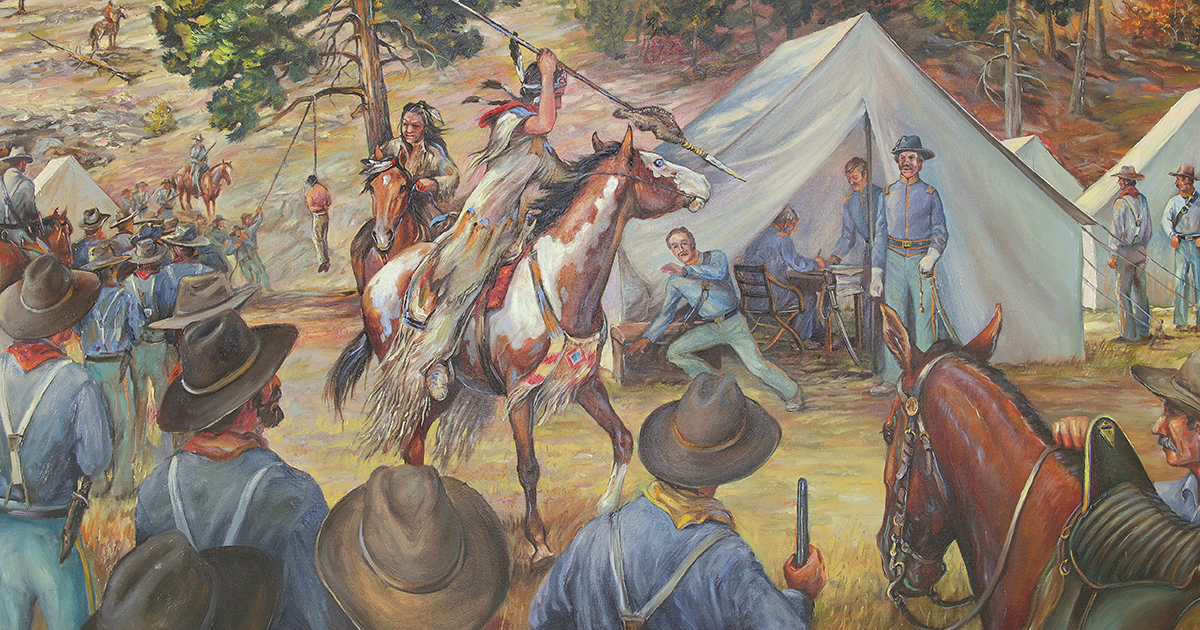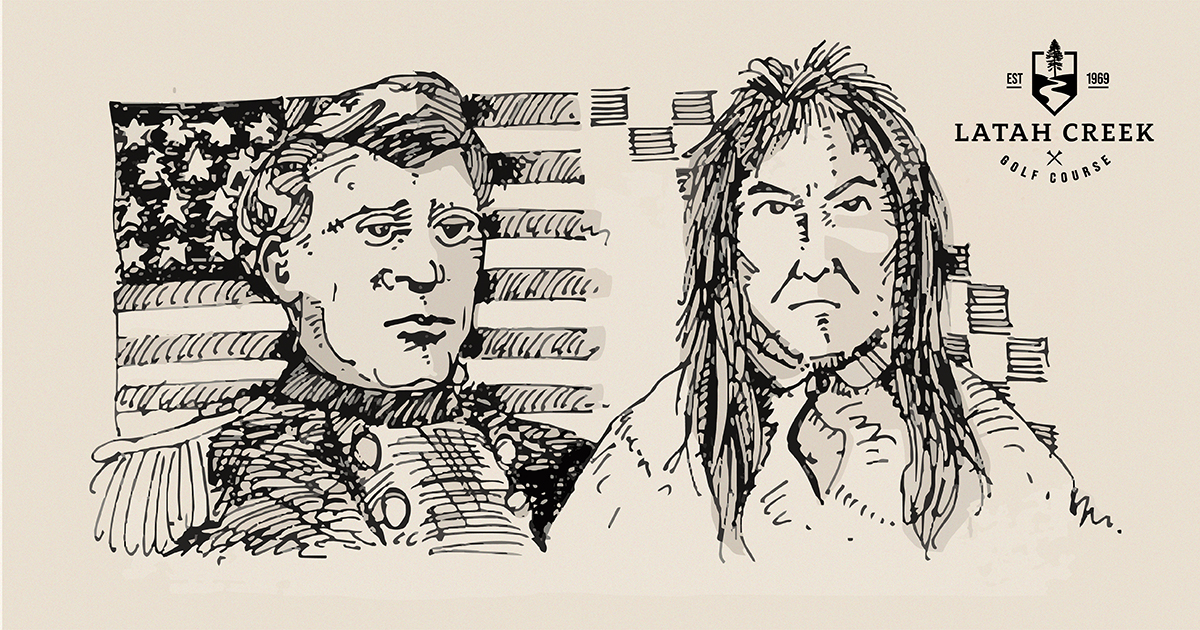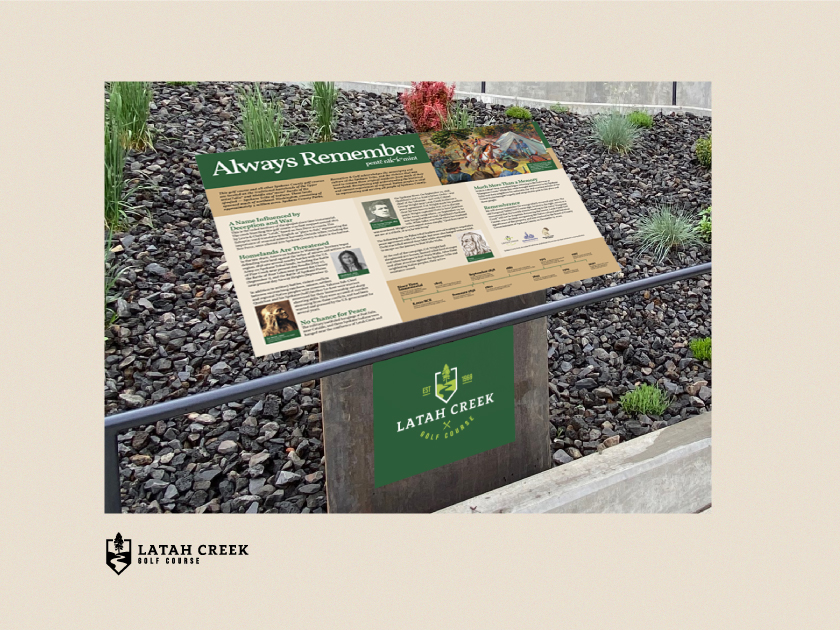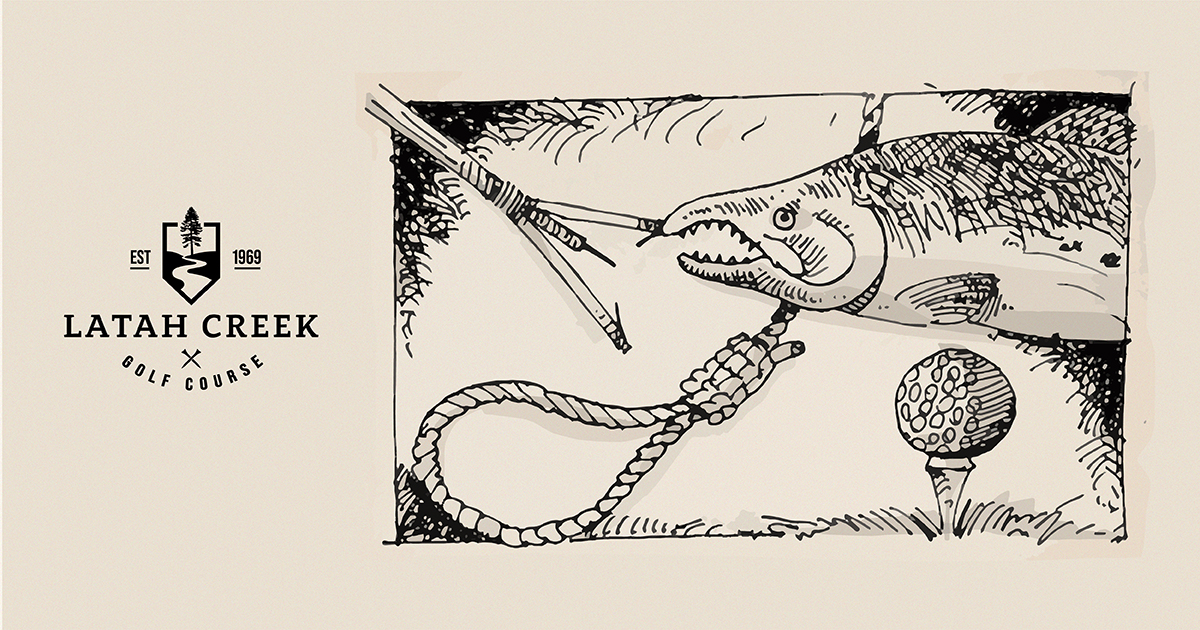9.25.23 | Read time: 4 min
Interpreting History to Create Understanding
Rick Hosmer
We generally live and work in places we think we know well. But there are always untold stories that influence what we see and experience each day. Learning the history of where we call home — both the interesting and the tragic — helps us better understand and appreciate where we live.
One hundred sixty-five years ago, events occurred that forever changed the Spokane region for the people who have always lived here. Native people remember these actions; they are critical for everyone to know.

Wright and Wrong Play Out
During September 1858, Colonel George Wright and a company of U.S. Army soldiers made their way from Fort Walla Walla to the land of the Spokane and Coeur d’Alene Tribes to wage war. After two battles around the lakes and plains west of Spokane, the out-gunned tribes were on the retreat.
After several days of pillaging and burning indigenous food caches and villages along the Spokane River and killing nearly 900 of the Native’s horses, the Army returned to Fort Walla Walla. On the way, they camped at a spot 20 miles south of Spokane on the banks of Latah Creek.
At that place, Colonel Wright aimed to take Yakama tribal leader Qualchan into custody, relating to his involvement in reported crimes and deaths of incoming miners and settlers to the region. Wright planned to invite Qualchan’s father, Owhi, to their camp as an enticement to bring Qualchan in. With Owhi arriving under a white flag to negotiate peace, he was instead captured and held hostage. Qualchan came to barter his peace with Colonel Wright the next morning. Upon Qualchan’s arrival, Wright’s soldiers quickly shackled him, and within 15 minutes (according to Wright’s report), Qualchan was hanged. Over the ensuing days, the military murdered multiple other tribal leaders attempting to negotiate peace. Owhi was shot as an escaping prisoner on the Army’s march back to Fort Walla Walla.
The events of September 1858 resulted in the waterway near the encampment being called “Hangman Creek.” These events are considered a dark spot on U.S. military action in Washington Territory. One can only imagine how it is regarded by the Native people who live in this area.

Hangman Returns to Latah
A few miles downstream from the site of Qualchan’s hanging, Spokane County Parks, Recreation & Golf operates an 18-hole public golf course. The course recently went through a name change from Hangman Valley Golf Course to Latah Creek Golf Course, along with rebranding that we handled at 116 & West — creating a new logo, course signage, and brand standards to promote the golf course. The brand design visually features the creek, rolling Palouse hills, and signature Ponderosa pines that line the fairways.
Following the rebranding, the County contracted with us to design, write, and fabricate an outdoor interpretive sign for installation at the course.

Getting the Story Right
Telling the story of what happened here over a century and a half ago was a sensitive undertaking. Emotions run deep, and the generational trauma caused by these actions is still painful to the hearts of the Spokane Tribe and other regional tribal people.
We’re grateful for the involvement of elders and leaders from the Spokane Tribe of Indians, who reviewed our historical research and copywriting. Their input brought clarity and purpose to the story, sharing perspectives that, as non-Native writers, we didn’t know or personally understand. The result was a monument that achieved communication goals for regional tribes and Spokane County.
Designed to Always Remember
The agency’s creative team found visuals for the interpretive sign during extensive research through historical archives. Photographs and drawings of key participants, including Qualchan, Owhi, Lokout, and Colonel Wright, brought faces to names in the story. The powerful painting “The Defiance of Whist-alks” by local artist Nona Hengen (included at the beginning of this story), depicts the scene of Qualchan’s hanging and the anger and heartbreak expressed by his wife, Whist-alks, of the Spokane Tribe. A historical outline from time immemorial to 2020 describes activities that occurred throughout the Spokane region for millennia and their acceleration over the past 200 years.
The 4’x3’ sign was fabricated and installed at the Latah Creek Golf Course entrance. Local golfers and visitors from around the region can take a few moments to see and read the important history of this location from a tribal perspective, understand the creek’s importance to regional tribes, and learn why the atrocious events of 1858 should always be remembered.
We are proud to have worked with the Spokane Tribe of Indians and Spokane County to accurately share this story, helping everyone know and better understand the history that shaped this place that we — Native and newcomer — call home.

